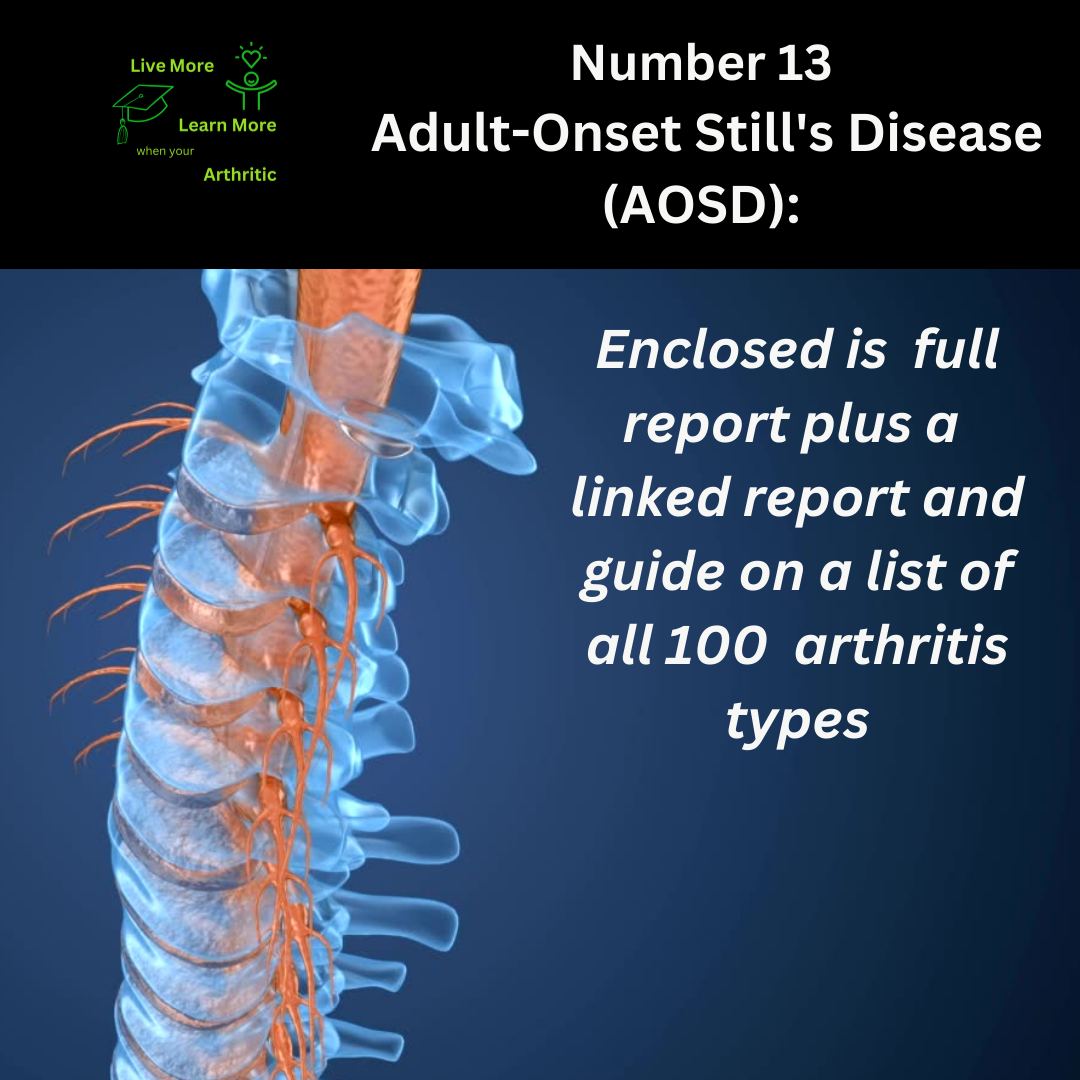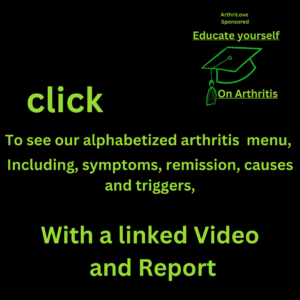
Adult-Onset Still’s Disease (AOSD): Number 13 on the list of 100 types of Arthritis
Understanding Adult-Onset Still’s Disease (AOSD): A Journey of Resilience
In the realm of autoimmune diseases, Adult-Onset Still’s Disease (AOSD) stands as a lesser-known but impactful condition that can significantly affect one’s quality of life. Unlike its juvenile counterpart, adult-onset cases of Still’s Disease present unique challenges and considerations, often leaving individuals grappling with uncertainty.
One of the most sought-after milestones for those with AOSD is achieving remission. This period represents not only relief from symptoms but also a renewed sense of hope and possibility. Remission in AOSD can vary in duration and experience, with some fortunate individuals experiencing long-term relief, while others navigate a more fluctuating journey.
A Closer Look at Adult-Onset Still’s Disease
AOSD is characterized by a complex interplay of genetic predispositions and environmental triggers. This autoimmune condition manifests as systemic inflammation, often presenting with hallmark symptoms such as spiking fevers, joint pain, and rash. The exact etiology remains elusive, but researchers continue to uncover insights into the mechanisms driving this condition.
Exploring Causes and Triggers
The triggers for AOSD can vary widely, from viral infections to environmental factors. Genetic predispositions are thought to play a role, with certain gene mutations potentially increasing susceptibility. The onset of AOSD can be sudden and unpredictable, leaving individuals and their loved ones searching for answers.
Navigating the Symptomatic Journey
Limited range of motion and joint stiffness are common features of AOSD, impacting daily activities and overall mobility. The disease’s unpredictable nature can lead to emotional turbulence, requiring resilience and adaptive coping strategies.
Unveiling the Age of Onset
AOSD predominantly affects individuals between the ages of 16 and 35, although cases outside this range do occur. This age distribution highlights the challenge of managing a chronic condition during the prime of life.
Life Expectancy and Disease Progression
While AOSD can significantly impact quality of life, its effect on lifespan remains a topic of ongoing study. With advances in treatment and holistic approaches, individuals can actively engage in maintaining health and vitality.
The Autoimmune Nature of AOSD
Yes, AOSD is classified as an autoimmune disease, where the body’s immune system mistakenly attacks healthy tissues. Understanding this underlying mechanism is pivotal in tailoring effective treatments and lifestyle interventions.
Embracing Proactive Approaches
Despite its challenges, a proactive approach can indeed enhance quality of life for individuals with AOSD. Holistic practices such as mindfulness, gentle exercise, and dietary modifications have shown promise in complementing traditional medical treatments.
Possible Complications and Holistic Breakthroughs
Complications of AOSD can include joint damage, chronic pain, and systemic inflammation affecting organs. In the pursuit of holistic breakthroughs, individuals have explored the benefits of natural remedies like turmeric for inflammation management and acupuncture for pain relief.
Interestingly, AOSD appears to affect men and women equally, challenging preconceived notions about autoimmune disease prevalence.
The Path Forward: Hope and Resilience
In conclusion, Adult-Onset Still’s Disease underscores the importance of resilience and community support in navigating life’s unexpected challenges. By embracing proactive strategies, cultivating emotional well-being, and staying informed, individuals can cultivate a path toward empowerment and vitality in the face of AOSD.
This exploration of Adult-Onset Still’s Disease aims to inform, uplift, and inspire those impacted by this condition. While the journey may be marked by uncertainty, there exists a tapestry of hope and possibility woven through proactive management and holistic well-being.

